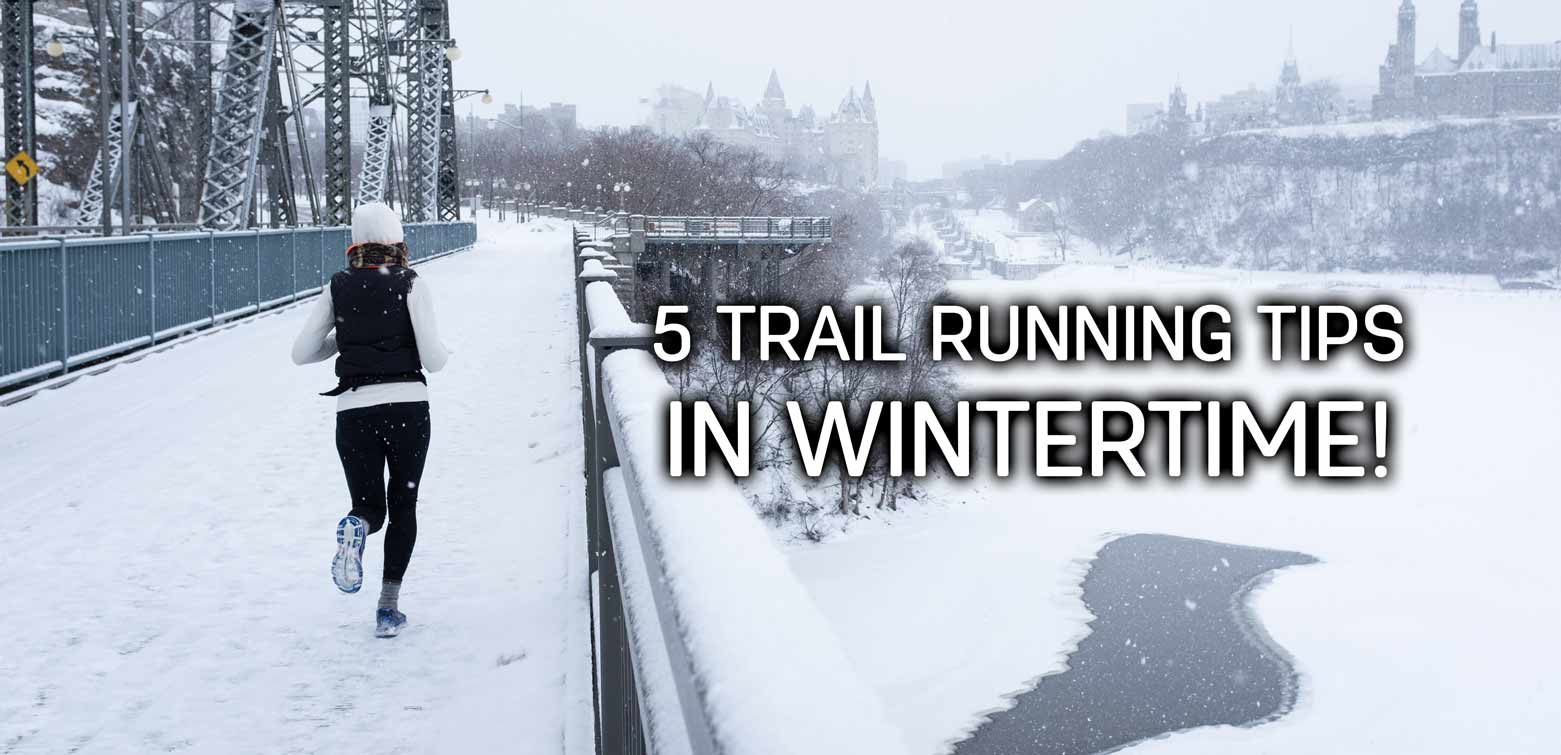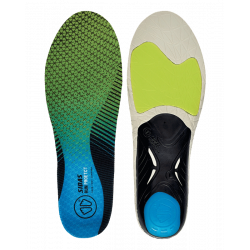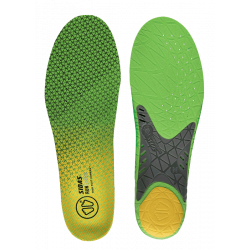 How do I optimize foot recovery after a race? Read more
How do I optimize foot recovery after a race? Read more 5 Trail running tips in wintertime!

Running during the winter period puts your feet to the test. Whether in Trail or on the road, the cold, the mud, the rain, the snow and the night are all elements that make it more perilous. For if in winter, the vast majority of mammals hibernate, preferring to rest in the shelter of a warm den, others, more adventurous, continue to brave the conditions by donning their trainers. Sometimes even with a goal in sight, whether it’s a participation in a Trail Blanc, a bib at the mythical SaintéLyon or simply to keep in good shape ahead of the excesses of the upcoming holidays.
The cold, the mud and the snow make the activity of running more difficult, not to mention more dangerous. It is therefore essential to adapt your preparation, your pace and your equipment, thanks to the insoles that more than ever bring: comfort, safety and stability.
Here are some tips from two experts in winter running: Marie Maligorne, head of our chiropody centre, and Manu Meyssat, multiple French Trail champion and double winner of the legendary SaintéLyon.
EXERCISE INCREASED VIGILANCE
"In winter, whether in the city or on a Trail, the conditions really deteriorate, with a risk of injury that increases sharply!" says Marie Maligorne. The cold, the rain, wind and snow degrade the terrain considerably, making it more slippery, more irregular and more chaotic. Visibility is also reduced by nightfall and the many dead leaves that hide the obstacles on your way, from the simple little holes to tricky roots through curbs. "You need to be extra vigilant because equipment alone cannot protect you from a higher risk of injury. Especially ankle sprains due to lack of attention or fractures related to falls."
ADAPT YOUR PACE
This more humid and slippery terrain naturally imposes an adaptation of the stride. At different levels. "It's hard to see where you put your feet, so we run a little more restrained. We are a little more on our guard! Confirms Manu Meyssat. He continues: "In Trail, muddy or snowy ground also offers less yield. One then modifies somewhat the way of running to seek more efficiency. Concretely, this translates into a safer and more economical stride with:
- A reduction in the amplitude of the stride. "For me, my strides are a little shorter, but the pace increases slightly. In short, I do more small steps!"
- A flatter foot attack. "The midfoot attack that I prefer is much too unstable and energy-consuming on soft ground, be it snow or mud. So I unfurl a stride with a flatter foot, because even if I lose in power and pure speed, I gain in efficiency and grip."
ADAPT YOUR PREPARATION
"A modification of the stride necessarily generates a different muscular solicitation. In this search for balance rather than propulsion, the whole inner lodge of the lower limbs is made to make greater contribution, especially the quadriceps,"Marie Maligorne says.
To prepare for this adaptation of the stride, the training besides running is then of immense interest. Beyond representing a physical activity sheltered from the cold, a non-negligible advantage in winter, the muscular reinforcement makes it possible to approach serenely, with power and a better equilibrium, the outings in trainers. Sheathing works the so-called "deep" muscles whilst proprioception increases coordination, fluidity and responsiveness.
The preparation even extends to the warming up, more than ever necessary when you move from the heat of a confined space to the cold of your training setting. "The starting up will necessarily be a little longer. Do not rush the muscles and be progressive in the effort, otherwise you’ll head for injury!"
ADAPT YOUR SHOES
Equipment is essential to face the harshness of the winter conditions and to make sure that running remains a pleasure. The double winner of the SaintéLyon insists: "The choice of shoes is crucial. They must meet two main criteria: grip and breathability."
Moisture appears as the main threat to your comfort. "Because a wet foot is a foot that gets cold very quickly, which offers less sensation and is more subject to the risk of blisters..." enumerates Manu Meyssat. A shoe with a waterproof membrane to prevent foot contact with water is essential.
Regarding the grip, on soft or slippery ground, the notches of the sole are necessarily longer and imposing to maximize grip. For icy roads where simple shoes are not enough, our Walk ½ Traction crampons are an extremely practical ally, very easy to slip on a snowy portion before putting them back in your pocket when there is less risk of falling.
KIT YOURSELF OUT WITH INSOLES
In winter, the need for cushioning, comfort and foot support are the same as for Trail under normal conditions. "They are even several times more risky and unstable than usual..." warns our head of the orthopaedic centre of sport.
Hence the non-negligible added value of insoles. Our Protect and Sense ranges have been developed to bring you safety, stability and performance, whatever the season. Ranges that come in 3 different models, so that everyone, regardless of the arch type, finds the solution best suited to his/her foot.
TAKE CARE OF YOUR FEET ON A DAILY BASIS
Regardless of the conditions, the foot remains the runner's main instrument. The reason why, more than any other body part, it must be given special attention, especially when winter puts it to the test.
For this, we have devised different solutions:
- Natural or electric shoe dryers to make sure you attack your outing with dry feet, in sanitized trainers. Because nothing is worse than humidity. For your comfort and your safety.
- Small silicone sleeves that slip around the toes to immunize you from the risk of black nails, particularly high in winter, because "the cold inhibits and anesthetizes pain, which requires more anticipation" Marie Maligorne reminds us.



